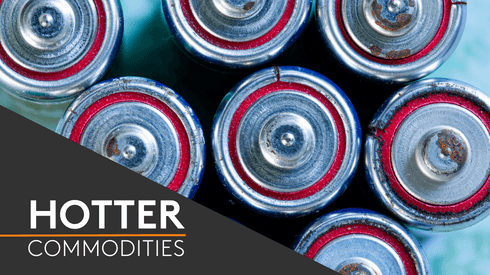A feeding frenzy appears to have started in the copper sector, as highlighted by comments made during a private meeting at the annual CESCO week in Santiago, Chile.
“We’re negotiating with one company to buy it, and we’ve been approached by another to buy us. I’m not sure which one will happen first,” a senior board executive at a copper miner told Fastmarkets.
This renewal of interest in mergers and acquisitions (M&A) is both an affirmation of anticipated demand growth for copper as well as a recognition of the constraints on future supply growth that the sector faces.
Several deals have already happened, including BHP’s acquisition of Oz Minerals and Hudbay Mineral’s purchase of Copper Mountain.
But Glencore’s bid for Teck sounded the starting gun for a flurry of discussions between larger corporates keen to ensure they will not be left for dust as their peers swoop in to propose deals.
Focus on copper industry
It makes sense that copper is a focus metal for the current interest in M&A activity.
For several years, the sector has been highlighting copper’s role in the energy transition, which will require copper for use in renewable energy as well as the electrification of the grid and electric vehicles.
The problem is that few companies want to spend billions building a copper mine, particularly given that it typically takes more than a decade to do so, often leading to cost overruns and adding to their price risk exposure.
Miners have also been facing pressure to return profits to shareholders in reward for their patience as the sector has swung from toppy price highs to destructive price lows.
The solution, it would seem, is to go out and buy an existing mine – and its owner – instead.
While a round of M&A would likely benefit shareholders, at least in the short term, it would unfortunately not address the copper sector’s supply issues. That’s because the world needs more copper units, not bigger companies to benefit from an anticipated price spike.
The fact remains that there are very few copper projects forecast to come into production in the coming months and years. Estimates that the world requires vast multiples of existing copper production will never be met unless the industry addresses the need to develop more sources of supply.
Ragnar Udd, the president of BHP Minerals Americas, says the world needs nine or 10 of the giant Escondida copper mines in the next decade to meet the needs of the energy transition.
Udd is not wrong – if analyst forecasts for copper are correct – but the reality is that this goal looks highly unachievable if the current project pipeline is anything to go by. The likes of Escondida, Chile’s largest mine with a production of 1.01 million tonnes of copper in 2021, are few and far between.
So, with low metals and mining company valuations, long-term price forecasts much higher than the market, and corporates sitting on cash war chests, M&A seems to be the inevitable way to go.
Almost a decade ago, former Glencore chief executive officer Ivan Glasenberg warned the mining industry against cranking up production in pursuit of lower costs, arguing that it not only ended up destroying value in terms of prices, but ultimately for the product.
Commodity markets are no longer in surplus
It was, of course, a different time for the mining industry. Back then, commodities markets were in surplus with a decent pipeline of projects laid out in the years ahead. Now – and certainly in the case of copper – they are not.
Teck has said on several occasions since receiving the merger proposal from Glencore that it would be interested in considering options for the company once it completes a proposed separation of the business into two entities, coal and base metals.
Shareholders are set to vote on the proposal on April 26.
Options on the table for Teck include partnerships, mergers, acquisitions and sales, the company said.
For some companies, M&A is not an option given the percentage size of the market their combined entities would be.
Joint ventures will naturally play a role; after all, these do not require a change of top management to achieve infrastructure, water and other logistical synergies for operations located in close proximity to each other.
As industry veteran Robert Friedland, founder and co-chairman of Ivanhoe Minerals, said last week, Teck would not find itself short of partners if it proceeded with its split.
But a massive copper mine each year for the next decade? No M&A is going to achieve that.
In Hotter Commodities, special correspondent Andrea Hotter covers some of the biggest stories impacting the natural resources sector. Sign up today to receive Andrea’s content as it is published.





